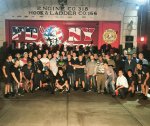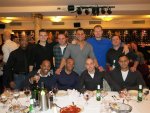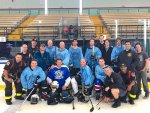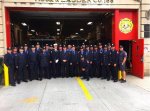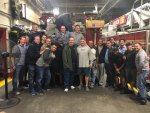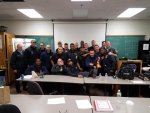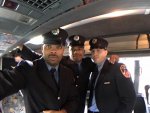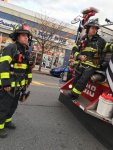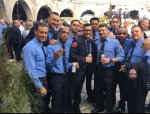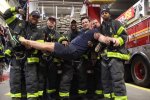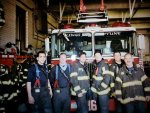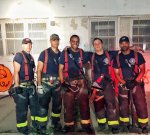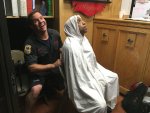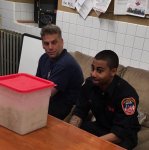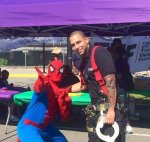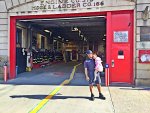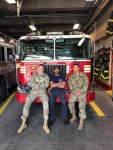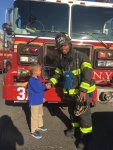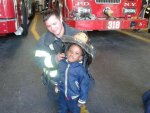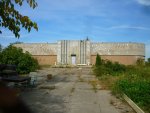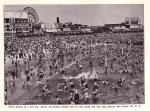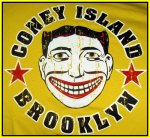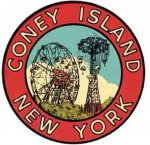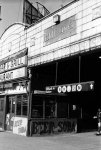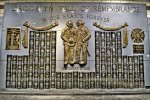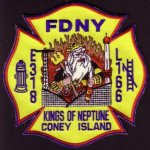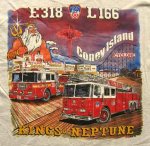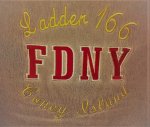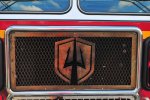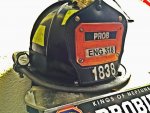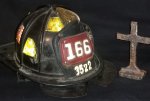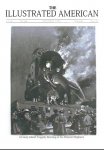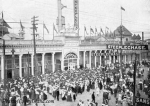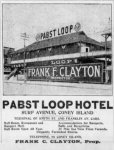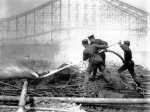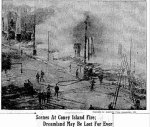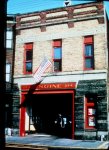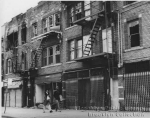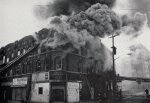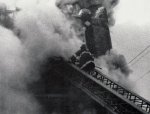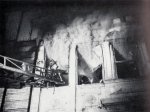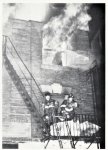ENGINE 318/LADDER 166 (CONTINUED)
ENGINE 318/LADDER 166 INCIDENTS/FIRES
2009 - 2ND ALARM - TOTONNO'S PIZZA
BOX 3552 BROOKLYN, DIV. 8, 2nd ALARM AT 9:37
address: 1524 Neptune Ave.
between: West 15th St. x West 16th St.
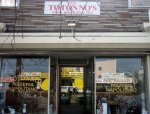
3552 @ 08:45
Engs. 245, 318, 253
T. Lad. 161, Lad. 166
Batt. 43
10-75 3552 @ 08:50
Ladder 169 is designated as the FAST Truck
Eng. 246
Rescue Co. #5
Squad Co. #1
Batt. 42
Division 8
Fire Building:
1 Story Brick 20 x 60 Taxpayer
All Hands:
75-3552 @ 09:24
Batt. 43 reports: Using All Hands. Fire in the rear kitchen and fire in the walls of a 1 Story Taxpayer used as a restaurant. 2 lines stretched. 1 line in operation.
Trucks are opening up. Primary Searches are negative. Fire is Doubtful.
@ 09:37
Division 8 to Brooklyn, Transmit a 2nd Alarm. We have fire extension into the cockloft.
Special Call 2 additional Battalion Chiefs. 1st Chief in is going to work fire duty.
2nd Alarm:
22-3552 @ 09:37
Eng. 281 act. 254, 243, 330, 276
T. Lad. 153, Lad. 168
Eng. 284 w/Satellite 3
Batt. 33 assigned to work
Batt. 48 Resource Unit Leader
Batt. 41 s/c Safety Officer
Batt. 32 s/c add Chief
Rescue Battalion / Safety Battalion
Fieldcom 1 / Tactical Support Unit #2
Command Tactical Unit
Car 10: Assist. Chief James Esposito
@ 10:04
Car 10: Assist. Chief Esposito reports: 2 lines stretched and in operation. 1 line into the 1st floor, 1 line to the roof. Continuing to open up. All searches are complete and negative. Fire is Probably Will Hold.
@ 10:35
Fieldcom 1: Progress Report for the 2nd Alarm, Box 3552, Division 8 reports:
Fire was in a 1 Story Taxpayer 20x60 with extension into the Cockloft. Fire is Under Control.
Job Duration: 1 hr. / 50 mins.
TOTONNO'S PIZZA
http://ny.eater.com/archives/2013/06/a_visit_to_coney_island_institution_totonnos.php

2009 - WATER RESCUE
New York City Fire Department (FDNY)
June 3, 2019
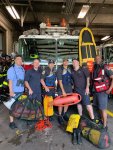
“We heard screaming coming from the pier. Our members made their way until they were able to visually locate the individual about 100 feet from the beach area. I sent Firefighter Jose Rivera and Firefighter Antonio Irizarry into the water where they made contact quickly. They were both tethered, and members from Ladder 166, with help from Engine 318 pulled them back to the beach,” says FDNY Lieutenant Wing Tsang who assisted in a water rescue this morning in Brooklyn. Lt. Tsang says, “We train for this and we are always prepared. The members were great. It’s all about teamwork." The patient was transported to a local hospital by FDNY members from Station 59
2010 - 2ND ALARM - CONEY ISLAND ARCADE FIRE
Suspicious Fire at Coney Island Arcade Building
May 6, 2010 by Tricia
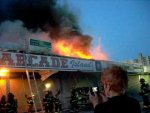
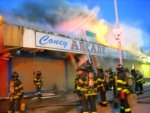
On the Coney Island Message Board and twitter, witnesses who live in the neighborhood began reporting a two-alarm fire at the Coney Island Arcade Building at West 12th Street and Bowery last night at 8:15 pm. The anonymous contributor who sent us the photo below said there were 7 fire trucks. The cause of the fire is unknown, but the FDNY scanner transcript reads: “20:42 hours – Duration 37 minutes. FieldCom: Transmit a 10-41 code 2 (Suspicious Fire, Vacant Structure), heavy volume of fire on arrival.”
ENGINE 318/LADDER 166 INCIDENTS/FIRES
2009 - 2ND ALARM - TOTONNO'S PIZZA
BOX 3552 BROOKLYN, DIV. 8, 2nd ALARM AT 9:37
address: 1524 Neptune Ave.
between: West 15th St. x West 16th St.

3552 @ 08:45
Engs. 245, 318, 253
T. Lad. 161, Lad. 166
Batt. 43
10-75 3552 @ 08:50
Ladder 169 is designated as the FAST Truck
Eng. 246
Rescue Co. #5
Squad Co. #1
Batt. 42
Division 8
Fire Building:
1 Story Brick 20 x 60 Taxpayer
All Hands:
75-3552 @ 09:24
Batt. 43 reports: Using All Hands. Fire in the rear kitchen and fire in the walls of a 1 Story Taxpayer used as a restaurant. 2 lines stretched. 1 line in operation.
Trucks are opening up. Primary Searches are negative. Fire is Doubtful.
@ 09:37
Division 8 to Brooklyn, Transmit a 2nd Alarm. We have fire extension into the cockloft.
Special Call 2 additional Battalion Chiefs. 1st Chief in is going to work fire duty.
2nd Alarm:
22-3552 @ 09:37
Eng. 281 act. 254, 243, 330, 276
T. Lad. 153, Lad. 168
Eng. 284 w/Satellite 3
Batt. 33 assigned to work
Batt. 48 Resource Unit Leader
Batt. 41 s/c Safety Officer
Batt. 32 s/c add Chief
Rescue Battalion / Safety Battalion
Fieldcom 1 / Tactical Support Unit #2
Command Tactical Unit
Car 10: Assist. Chief James Esposito
@ 10:04
Car 10: Assist. Chief Esposito reports: 2 lines stretched and in operation. 1 line into the 1st floor, 1 line to the roof. Continuing to open up. All searches are complete and negative. Fire is Probably Will Hold.
@ 10:35
Fieldcom 1: Progress Report for the 2nd Alarm, Box 3552, Division 8 reports:
Fire was in a 1 Story Taxpayer 20x60 with extension into the Cockloft. Fire is Under Control.
Job Duration: 1 hr. / 50 mins.
TOTONNO'S PIZZA
http://ny.eater.com/archives/2013/06/a_visit_to_coney_island_institution_totonnos.php

2009 - WATER RESCUE
New York City Fire Department (FDNY)
June 3, 2019

“We heard screaming coming from the pier. Our members made their way until they were able to visually locate the individual about 100 feet from the beach area. I sent Firefighter Jose Rivera and Firefighter Antonio Irizarry into the water where they made contact quickly. They were both tethered, and members from Ladder 166, with help from Engine 318 pulled them back to the beach,” says FDNY Lieutenant Wing Tsang who assisted in a water rescue this morning in Brooklyn. Lt. Tsang says, “We train for this and we are always prepared. The members were great. It’s all about teamwork." The patient was transported to a local hospital by FDNY members from Station 59
2010 - 2ND ALARM - CONEY ISLAND ARCADE FIRE
Suspicious Fire at Coney Island Arcade Building
May 6, 2010 by Tricia


On the Coney Island Message Board and twitter, witnesses who live in the neighborhood began reporting a two-alarm fire at the Coney Island Arcade Building at West 12th Street and Bowery last night at 8:15 pm. The anonymous contributor who sent us the photo below said there were 7 fire trucks. The cause of the fire is unknown, but the FDNY scanner transcript reads: “20:42 hours – Duration 37 minutes. FieldCom: Transmit a 10-41 code 2 (Suspicious Fire, Vacant Structure), heavy volume of fire on arrival.”
Last edited:




